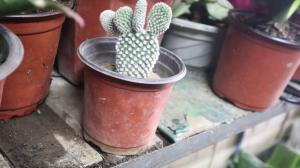Introduction
In recent years, aloe vera has gained popularity not only as an ingredient in skincare products but also as a houseplant. Aloe vera is cherished for its low maintenance, aesthetic appeal, and potential health benefits. In this article, we will explore why aloe vera makes an excellent indoor plant and how to care for it.
Aloe Vera's Benefits as an Indoor Plant
Aloe vera is well-suited as an indoor plant because it does not need too much space, light, or water to thrive. It can grow, bloom, and reproduce in small pots, making it an ideal houseplant for urban dwellers, apartment owners, or those with limited outdoor space. Moreover, aloe vera's succulent leaves and bright green color add a natural, effortless touch to any home or office decor.
One of the most celebrated benefits of aloe vera as a houseplant is its potential air-purifying capability. Aloe vera is believed to absorb harmful toxins, such as formaldehyde, benzene, and nitrogen oxides, from the air, providing a cleaner and healthier indoor environment for its owners. In addition, the gel inside the aloe vera leaves has potent healing and moisturizing properties that can benefit the skin and promote wound healing.
Caring for Your Aloe Vera Plant
Despite being low-maintenance, aloe vera plants still need some care and attention to thrive. Here are some tips to ensure that your aloe vera plant stays happy and healthy:
1. Watering: Aloe vera is a succulent, meaning that it stores water in its leaves, and therefore, it does not need frequent watering. In general, water your aloe vera plant only when the soil is dry to the touch. Avoid overwatering, as this can lead to root rot and other fungal diseases.
2. Sunlight: Aloe vera does best in bright, indirect sunlight. Too much direct sunlight can damage the plant's leaves, while too little light can cause it to grow slowly or not at all. Place your aloe vera plant near a window or in a partially shaded area indoors to receive the optimal amount of sunlight.
3. Soil: Aloe vera prefers well-draining soil, with a pH level of 6.0 to 6.5. You can use a cactus or succulent potting mix or make your own by mixing sandy soil or perlite with regular potting soil. Avoid soil that retains moisture, as this can suffocate the roots.
4. Temperature: Aloe vera can tolerate a wide range of temperatures, from 40 to 90 degrees Fahrenheit. However, it prefers temperatures between 60 and 80 degrees Fahrenheit. Avoid placing your aloe vera plant near drafts or air conditioning vents, as this can stunt its growth or cause the leaves to brown or die.
Conclusion
If you are looking for a low-maintenance, aesthetically pleasing, and potentially beneficial indoor plant, aloe vera should be at the top of your list. With proper care, your aloe vera plant can thrive and add a natural touch to your home or office decor while potentially improving your indoor air quality and skin health. So give it a try and see for yourself why aloe vera is a good indoor plant!

 how many times do yo...
how many times do yo... how many planted tre...
how many planted tre... how many pine trees ...
how many pine trees ... how many pecan trees...
how many pecan trees... how many plants comp...
how many plants comp... how many plants can ...
how many plants can ... how many plants and ...
how many plants and ... how many pepper plan...
how many pepper plan...





























